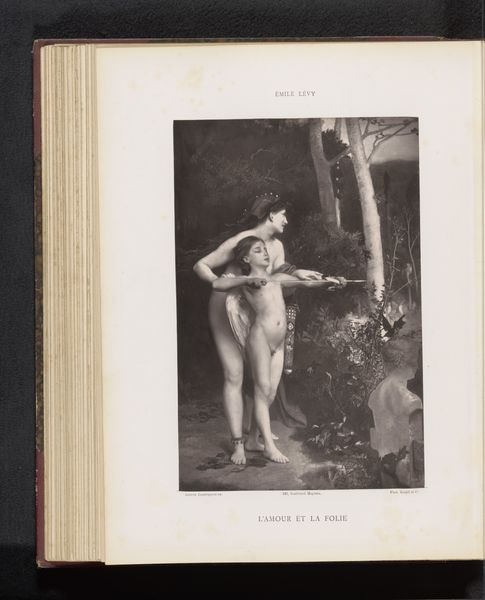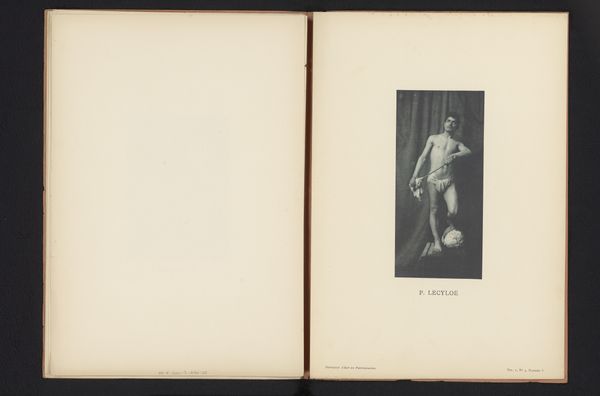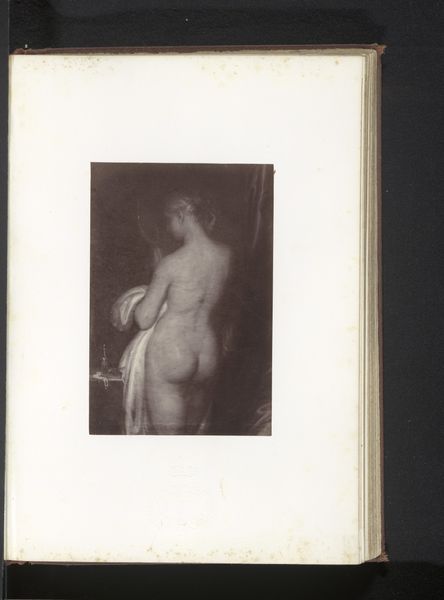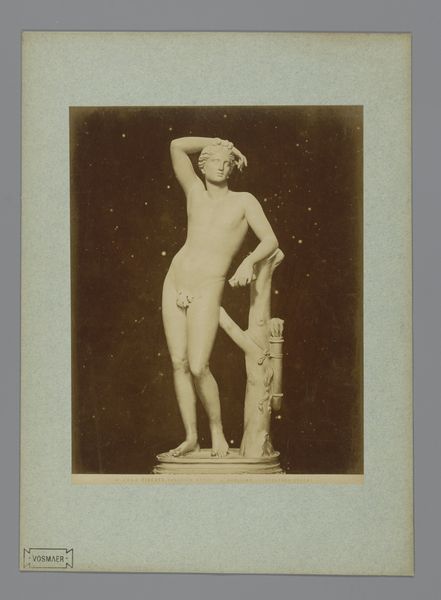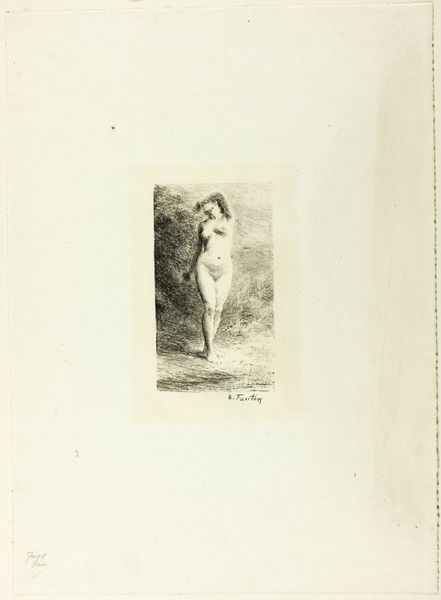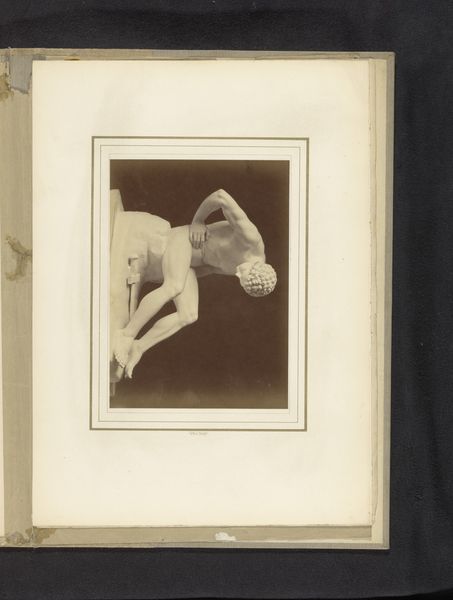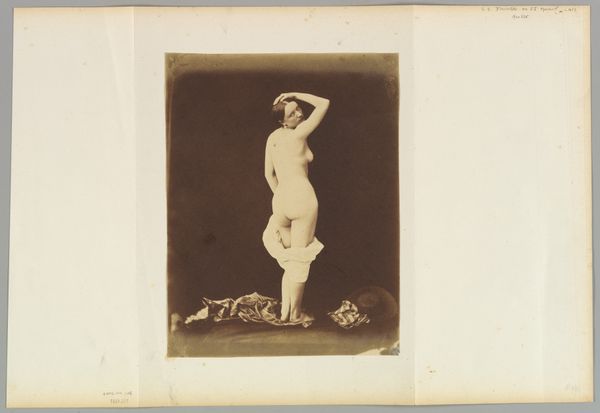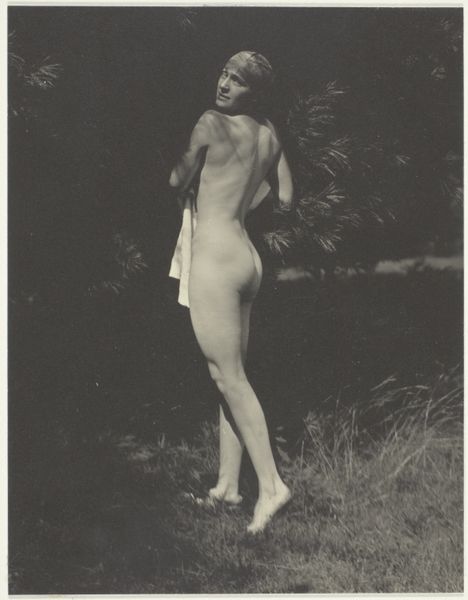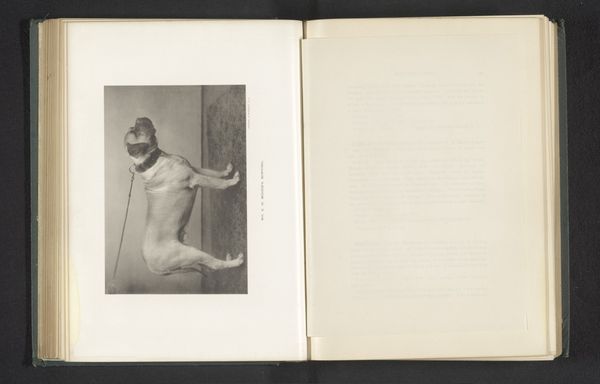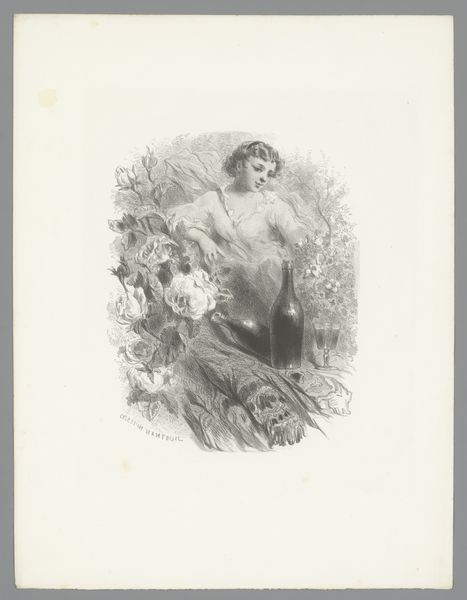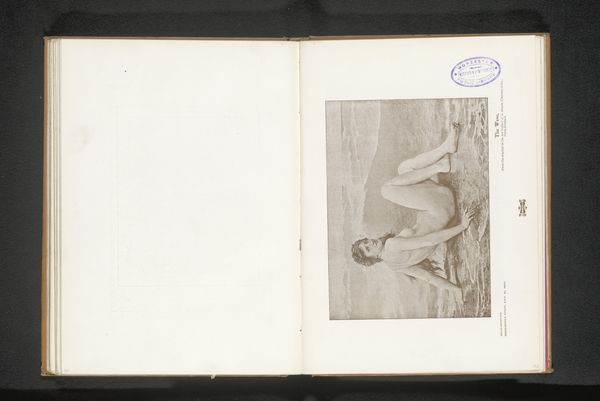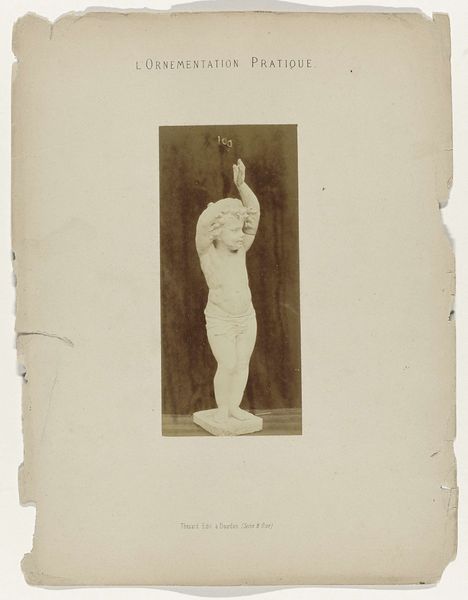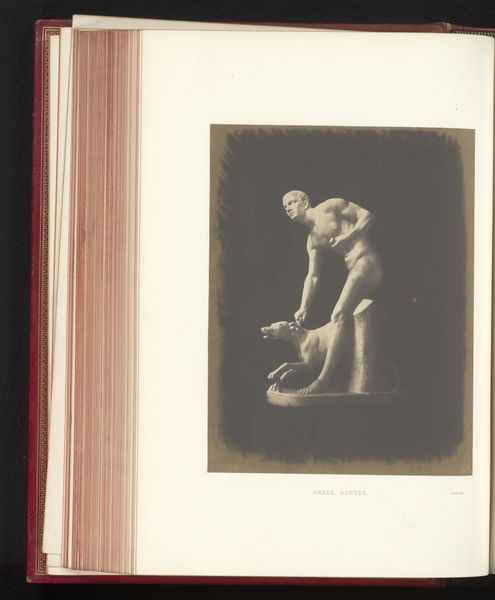
Reproductie van La source door Jean Auguste Dominique Ingres before 1878
0:00
0:00
Dimensions: height 239 mm, width 122 mm
Copyright: Rijks Museum: Open Domain
Curator: Before us, we have a reproduction of "La Source" by Jean Auguste Dominique Ingres, created before 1878. It is currently housed here at the Rijksmuseum. Editor: Ah, "La Source"—the source indeed! What strikes me first is the almost unreal smoothness, the way the light catches her skin. She's pouring water from a classical urn, which spills forth looking thick, like milk in monochrome. There is also a very subtle contrast in this B&W version between the subject’s body and the backdrop which has a slight painterly aesthetic to it. Curator: Indeed. The image's title, translating to "The Source," is important. It’s essential to consider this work through a feminist lens, understanding the representation of the female body as both idealized and objectified within the context of 19th-century academic art. Ingres was of course, a master of the Neoclassical style. How does this rendition shift and manipulate the viewer’s perceptions? Editor: It's interesting to see this in print. The black and white strips the subject of its immediate, shall we say, allure. It looks somehow...more sterile. Perhaps Ingres’ contemporaries were a tad bit shocked with their full color. Curator: The reproduction introduces another layer of analysis, particularly when viewed through the framework of photography and print culture. Photography was emerging during Ingres’ lifetime and was often deployed in service of circulating artwork and propagating knowledge about art and the artists. And of course to idealize western beauty standards of the era. It's vital to critically analyze how Ingres’ aesthetic choices and this dissemination contribute to larger social power dynamics and the construction of normative ideals. Editor: Perhaps he found something timeless and pure that many strive for? Maybe something spiritual that could only be properly explored when placed under that lens, when reproduced in black and white print. What you pointed out about female ideals and norms makes me want to paint against them and find my own form. Curator: It prompts questions about beauty, representation, and the power of art. Editor: Exactly. The art we produce is never objective—all forms of artwork has intention of capturing and shaping perspective!
Comments
No comments
Be the first to comment and join the conversation on the ultimate creative platform.
